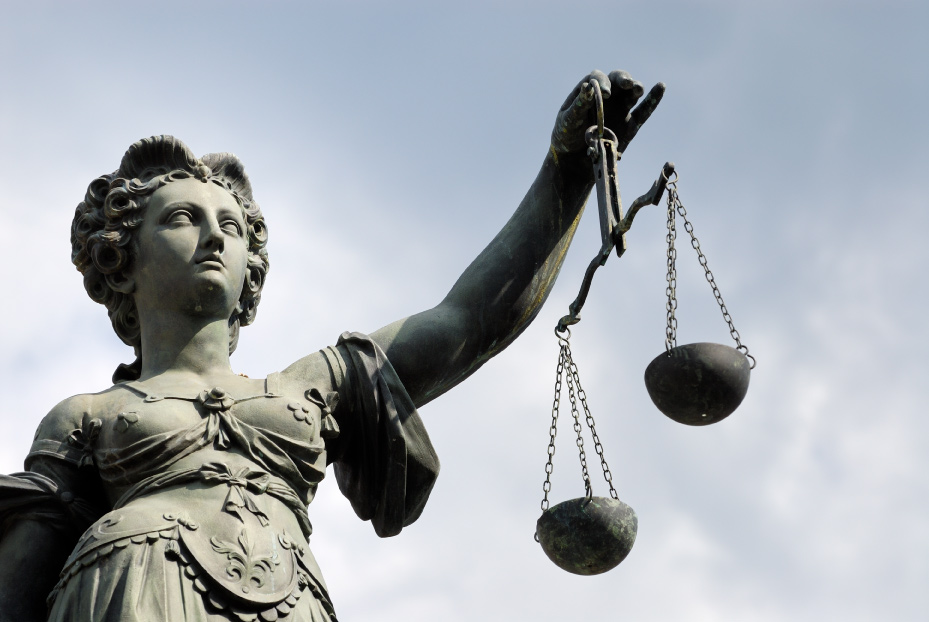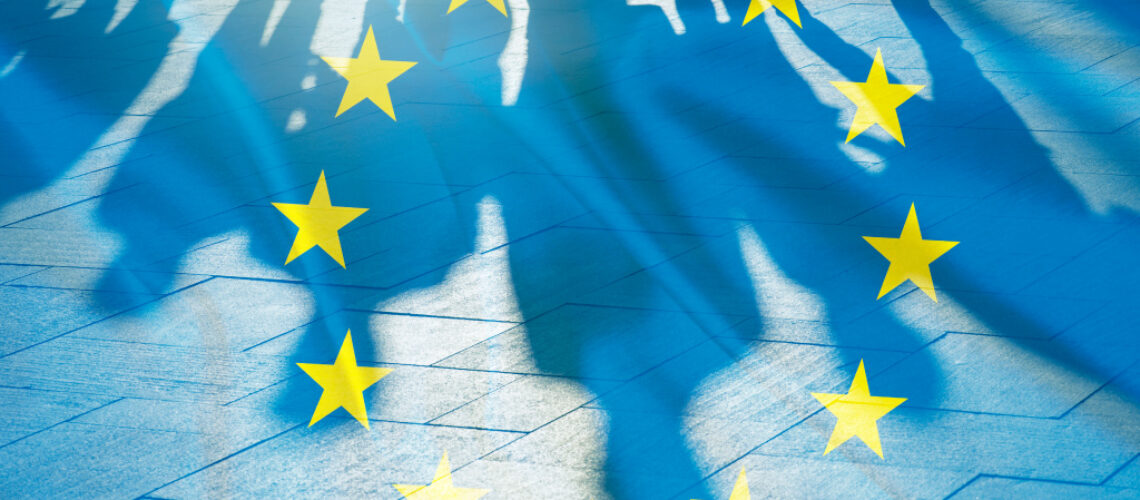With just a few clicks, copyright protected work like photos, graphics and videos can be accessed anywhere in the world. Keeping track of copyright laws around the world is no easy task, especially when you realize that there are relatively no physical boundaries to protect content online. It’s with this in mind that having a unified copyright law in Europe becomes so important.

Copyright in Europe: Similarities and Differences between the Member States
At this point in time, there is no single framework for copyright law in Europe that is valid across all countries on the continent. Instead, each country has its own set of copyright laws, which are backed up by the help of international copyright agreements and EU legislation.
► International Copyright Treaties
International copyright treaties aim to create a minimum level of copyright protection which can be applied across national borders. The most important of these pre-existing agreements is the Berne Convention of 1908. Since its inception in 1887, the agreement, which protects literary and artistic works, has been agreed upon by nearly every country in the world – 176 countries as of July 2018.
The Berne Convention upholds automatic copyright protection without any need for the copyright holder to formally register their work. The agreement guarantees that the work in question is protected for at least 50 years after the death of the copyright holder. In 1993, the EU extended this protection to 70 years.
The application of Lex Loci Protectionis (the application of the law of the place where the property is copyrighted) means that citizens of a participating nation can expect their work to be protected in other such countries. As long as participating countries stick to Berne Convention standards, the rights of the Berne Convention guarantee a minimum safeguard by ensuring the basic rights of the copyright holder. The Berne Convention covers the author’s exploitation rights, as well as their personality rights.
► Transnational Guidelines for Unified Copyright Law in Europe
The EU’s attempts to enforce a unified copyright law in Europe have all followed a certain path. Since the 1990s, 14 different guidelines have been issued with the aim of homogenizing copyright law across Europe. Unlike with an act of EU legislation, which would be directly enforceable in member states, each member was given the task of incorporating the EU guidelines into their own legal systems. The responsibility of implementing these guidelines was then handed over to each member state.
► European Copyright - Shaped by the ECJ
The European Court of Justice (ECJ) has always had a significant role to play with regard to European copyright law. The ECJ defines integral terms like ‘work’ & ‘public domain’, and by doing so, creates a definitive standard which can be referred to when a national court has doubts as to a certain term from the copyright guidelines. The ECJ remains, in this regard, an important point of contact.
The ECJ’s ability to quickly adapt means that it is better equipped than EU legislation to deal with fast paced changes in the technology industry. This is how the ECJ has been strongly involved in many of the latest developments to internet regulation, particularly to Linking and Framing. EU legislation, on the other hand, simply cannot keep pace. The last big policy change it announced came in 2001, the very same year that Google began it’s image search service and long before Facebook or Instagram became so influential.
EU copyright law has long been seen as a potential hurdle to scientific and societal development, and as a result there have been consistent calls for reform. EU commissioner for Digital Economy and Society, Günther Oettinger, first put forward a proposal for a modernised European copyright law in 2016. In June 2018, the legal committee of the EU Parliament agreed on the introduction of Article 13 and on September 12th of the same year, the European Parliament agreed to the EU commission’s controversial proposal for an EU wide author’s rights directive. The following negotiations became bogged down and left European copyright reform in the balance until March 26th, 2019, when the European Parliament finally voted for the reform to pass. This was met by a huge wave of protest, as more than one hundred thousand people demonstrated across major cities in Europe. The final step to this process will be the acceptance of the reform by the European Council of Ministers, which is expected on the April 9th, 2019. Should they manage to come to an agreement, the long awaited EU copyright law reform would finally be completed and the member states would then have two years to write the guidelines into their own national law.

Where Do Transnational Gaps in the Law Still Exist?
As part of the InfoSoc Directive from the year 2001, important questions as to the right to reproduction, the right to distribution and public domain rights were answered. There remains, however, a large number of areas which aren’t covered by EU law. In the guidelines published by the EU, there is barely any information to be found relating to personality rights or contract law. Planned European copyright reforms are, however, looking to ensure fairer contracts for copyright holders.
Personality rights protect the copyright holder and their relationship to their work. They include rights linked to the naming of the copyright holder and the option to protect work from being defaced – the foundations of which are already enshrined in the RBC. While in most EU states personality rights are ensured for the same amount of time as the rights of exploitation (70 years after the death of the copyright holder), there are a few exceptions. Notably, in France and Italy there is no time limit for personality rights.
A further difference can be seen in the so called ‘rights of the creator’ law, which is applicable across Germany, and states that the copyright for a work belongs to the person who created it. This differs from the Netherlands and the UK, where work created under certain employment conditions can be, in principle, the property of the employer. Despite first impressions, however, employment contracts in Germany make it possible for the exclusive rights of use to pass directly to the employer. In reality, the two principles aren’t as different as they first appear.

No Rules without Exceptions
Similarly, there are notable discrepancies to be found in the areas of copyright law which appear to be governed by the EU. In the above mentioned InfoSoc Directive, several exceptions are named, in which copyright protected work can be used without the permission of the copyright holder. In doing so, the EU hopes to create a fair balance between the interests of the copyright holder as well as of the user of the work. Such exceptions exist for certain work taken for personal use, for teaching, or for research purposes.
The problem here is that, although each member state can apply these exceptions to their own laws, it is not considered mandatory. Member states can apply any number of the 20 potential exceptions to their own law, however the decision to do so rests solely on their own shoulders. This leads to a situation where certain behaviour may be illegal in one country, but not in another.
The ‘Freedom of Panorama’ is a good example of country-specific differences in European copyright law. The aforementioned rule accounts for common situations in which, for instance, you have taken a photo of a building and wish to share it online. By the stipulations of the § 59 UrhG law in Germany, this wouldn’t pose a problem, and even commercial use of the photograph could be permitted. Most European countries have a ‘Freedom of Panorama’ law like in Germany.
Especially photographer friendly countries like Ireland, the UK and the Netherlands have particularly relaxed rules when it comes to the ‘Freedom of Panorama’. In these countries, the outside of buildings, as well as the interior can be photographed for either private or commercial use.
In other EU member states, however, the ‘Freedom of Panorama’ isn’t in place at all. Particular attention should be paid in Italy, France, and Greece, as it’s in those countries where no such rules apply. When taking photos in those countries, pay attention to whether or not the copyright protection on the building is already expired - usually 70 years after the death of the copyright holder.
The area of EU law responsible for the protection of photographs contains a real surprise. In most EU countries, the law is similar to that of Germany, where photos are largely protected. Photos which don’t reach the creative criteria to be considered as photographic works are still protected as photos in their own right under EU law. In contrast, outside of the EU it can be a completely different story. In Switzerland, for example, photos are only protected when they meet certain creative criteria or can be considered as being of artistic value. These rules are, however, heavily criticised and a change in the law is expected in the near future.

Different Regulation and Different Compensation
Legal differences pertaining to the copyright holder’s rights to compensation can also be expected. In Germany, if a photo is used without permission, the level of compensation is measured against a fictitious fee that the user would have paid had they followed the correct licensing procedures. This fee could be doubled in the event that, in addition to the unauthorized use of the copyrighted material, the user also fails to name the copyright holder. Fines, however, are rarely, if ever, incurred.
In other EU countries the situation is a little bit different. In Austria, for example, the copyright holder can demand compensation at double the rate of the original licencing fee, while in Poland that original fee can be tripled! According to the ECJ, such rules are not at odds with EU law. The court, however, points out that the payment of a fictitious licensing fee doesn’t guarantee correct compensation for the damages which could potentially be incurred. Finally, the payment of a fictitious licensing fee would not take into account the fee that could be incurred by the copyright holder in the process of determining the infringement activity.
Conclusion: Heading in the Direction of Homogenization
When all is said and done, there is still not a single easily definable and applicable European copyright law. However, International agreements, EU legislation, and the ECJ, have all gone a long way to ensure that there is at least some semblance of unity between the EU member states. Images can be shared and reproduced online with such ease that copyright protection really shouldn’t be restricted to the legal systems of single nations. Although important differences still remain, there is continued hope that we are heading in the direction of a unified European copyright law in the coming years.

